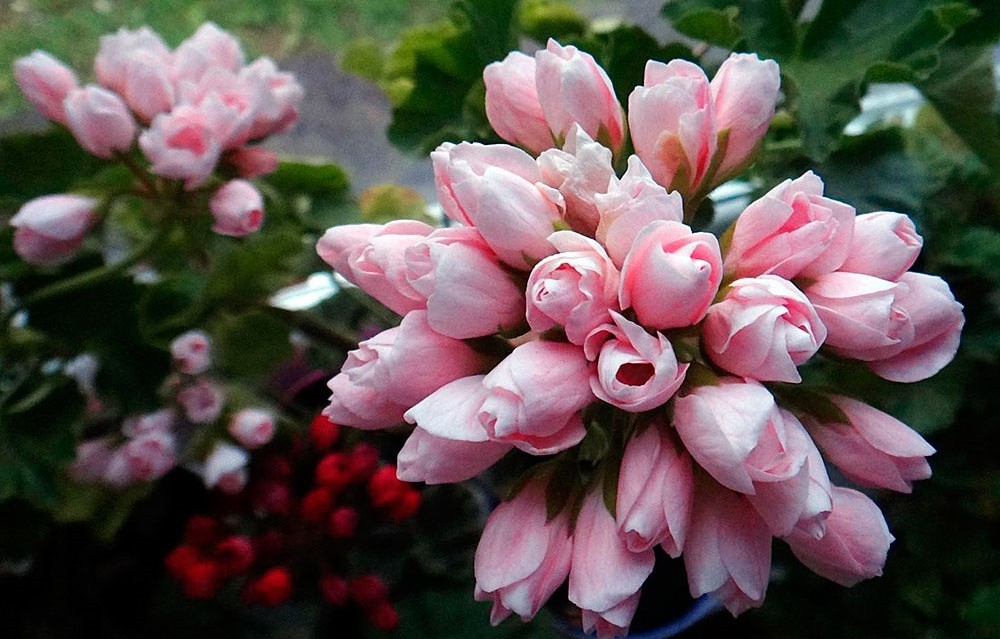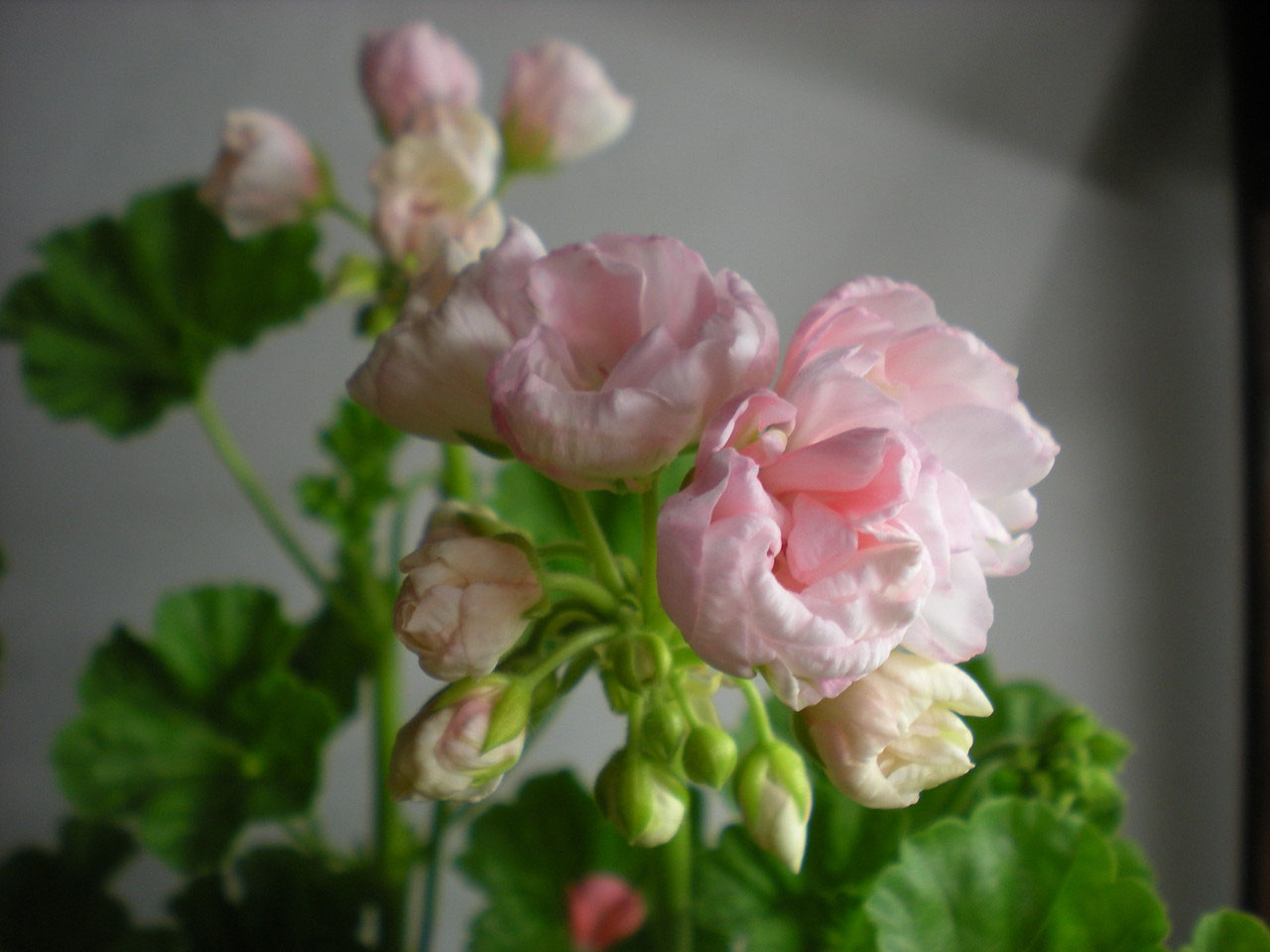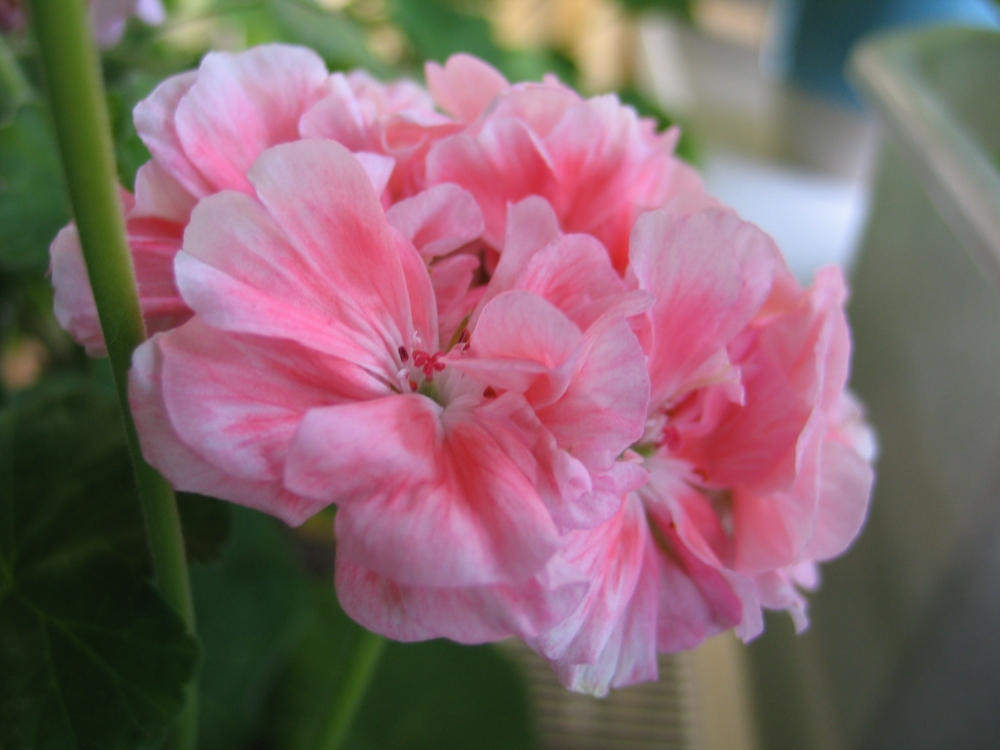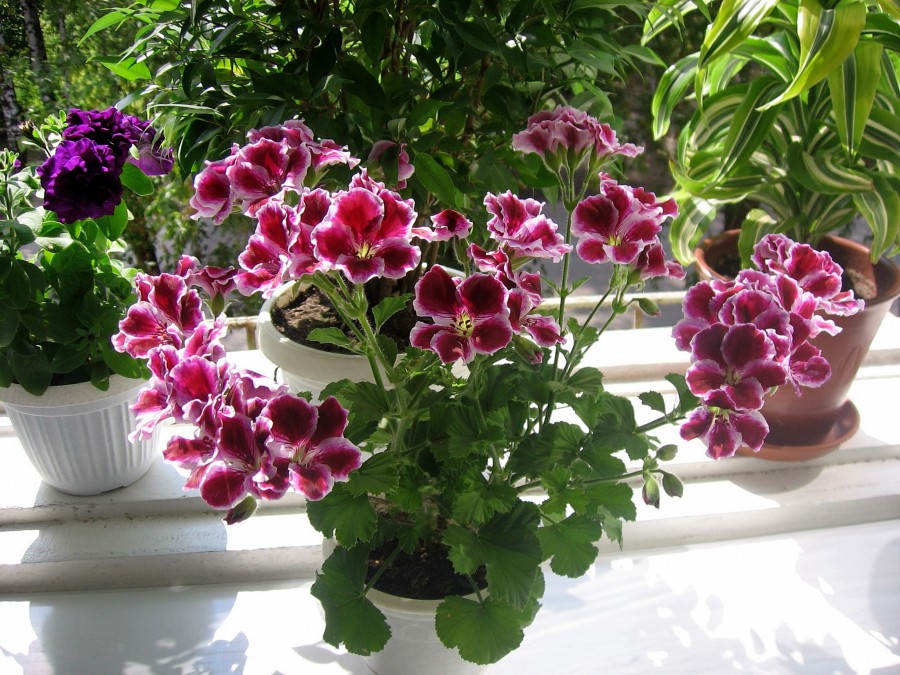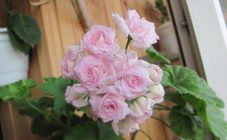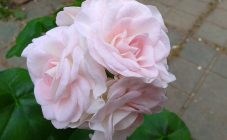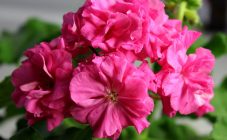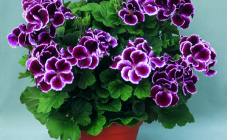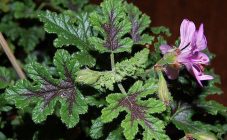Content:
The main nurseries that grow beautiful, abundantly flowering shrubs of tulip geraniums are in Holland, Germany and Sweden. Pelargonium tulip first appeared in the American city of Boston, in the mid-70s of the last century. In the beginning there were only 5 unusual species, each hybrid variety of tulip pelargonium was named after the women of the family breeders who bred this beautiful flower. Pelargonium is known as geranium, and has long become the home favorite of many housewives.
general characteristics
Pelargonium inflorescences look elegant, flowers have elongated petals that tightly surround the stamen. Color variations are varied and depend on the plant variety, but the appearance of each is charming and sophisticated in its own way.
An unusual form of pelargonium was achieved artificially, by a long process of hybridization, in which a zonal geranium with a simple flat corolla was taken as a basis. However, there is a version that the curved shape of the petals turned out in the process of natural mutation.
Geranium is very difficult to hybridize; in the process of growth, it is distinguished by the desire to return to its original appearance. Nevertheless, breeders from the American nursery Andrea managed to breed 14 varieties of a luxurious flower with an amazing half-open bud shape, which remains unchanged throughout the flowering period.
Description of the plant:
- bush height - ranges from 30 to 75 cm, depending on the variety;
- color - from beige to deep dark red;
- leaves - dark, green, hard, with a slight sheen, with veins, one side is darker than the other;
- each flower contains 7-9 petals;
- the edges of the petal are smooth or serrated;
- the petals of the flower are rolled up, tightly covering the stamens, which complicates the selection of the plant;
- on each stem - up to 50 flowers, collected in airy inflorescences.
Characteristics of varieties
All varieties of tulip pelargonium are bred only in nurseries, because the closed shape of the bud makes pollination difficult in natural growing conditions.
Marbacka Tulpan
Marbasca Tulip is distinguished by abundant year-round flowering.
A variety with a surprisingly delicate color of flowers. Tight, pot-bellied buds with double petals will adorn any flower collection.
Description of Tulip Marbaki:
- leaves are glossy, dark green;
- petals - curved, terry;
- color - white and pale pink;
- flower size - 9-10 mm.
This elegant inflorescence, due to the specific shape of the flowers and their splendor, has a second name - "Indomitable Blonde".
Pelargonium Lilian Andrea
The distinctive features of Pelargonium Linea Andrea and Lilian Andrea are the same:
- bush - undersized, no higher than 20-25 cm;
- color - pronounced bright crimson in Lillian Andrea;
- color - pale lilac at Linea Andrea;
- petals - with a pointed top;
- leaves - green, covered with small villi.
Marbacka Sorgardens pelargonium
Refers to the standard area view. Have Marbacki Sorgardens pelargonium:
- large inflorescences of pink or peach flowers;
- petals - delicate, terry;
- green leaves with shallow veins;
- bush belongs to dwarf plant species.
Delicate inflorescences of this bush are like a wedding bridal bouquet. This type of geranium must be provided with the necessary temperature regime and timely watering, otherwise the flowering will not be so luxurious.
Pelargonium Marbacka Rose
It has a neat bush structure that does not need formative pruning. Distinctive features of Pelargonium Marbasca Rose:
- bushes well;
- flowers - flesh and pale pink, closer to the core - rich coral;
- inflorescences are large, fluffy, airy and at the same time dense;
- has a fast growth, begins to bloom from the very embryos of buds.
Agrotechnics
The tulip flower is unpretentious and does not require special conditions of detention, but there are requirements that must be adhered to.
The soil
The composition of the soil does not really matter, but it should not be clayey. Any universal primer that is sold in specialized stores will do. For looseness, it is mixed with sand 5: 2 and a small amount of wood ash is added.
At the bottom of the flower pot, drainage from shells or small pebbles must be placed, otherwise excess moisture will accumulate, which will lead to decay of the root system.
Lighting
In a place where there is not enough light, pelargonium will stop blooming and will quickly fade. She needs a lot of lighting to develop at full strength. In winter, it is advisable to put a fluorescent lamp over it, especially if the flower pot is not on the windowsill.
In summer, natural light is enough for geraniums, but it must be protected from direct sunlight, otherwise the leaves will burn. The best place for a flower would be a loggia or balcony with enough light.
Air temperature
Pelargonium Lilian Andrea does not tolerate drafts; when airing the room, remove the flower pot with geraniums from the windowsill.
The temperature regime depends on the seasonal season:
- in summer - about 25 degrees Celsius;
- in winter - 18-19 degrees Celsius.
Watering
An excess of moisture causes decay of the roots of the plant, with a shortage, the plant withers, stops blooming, the leaves turn pale, brown spots appear on them. Pelargonium prefers moderately moist soil, it is watered:
- in summer - in dry air, the flower is watered little by little, but daily;
- in winter, it is enough to moisten the ground 2-3 times a month.
For watering, tap water is defended, poured whenever the earth dries up, they do it strictly at the root, avoiding splashes on the leaves and buds.
You can not spray the bush with a sprayer, this leads to deformation of the leaves and the appearance of spots on them. In order to regularly receive moisture to the root, a little water is poured into the pan. The dust deposited on the leaves is wiped with a damp cloth.
Fertilizer
The soil is filled with nutrients during planting of a flower, then liquid fertilizers intended for this type of plant are added 2 times a month. Any complex mixtures that contain potassium and phosphorus are suitable.
The shrub is intensively fed during the period of active flowering, when the flower has a break in budding - no more than 2 times a month.
Care
For the good development of an ornamental shrub, no special care is required. Enough:
- comply with all of the above conditions;
- pick off dried leaves;
- pinch the extended branches in time to form a beautiful plant shape.
Pinching is done before the growing season over 6 leaves, this contributes to a more abundant flowering of pelargonium.
Reproduction
Geraniums are propagated in two ways:
- seeds;
- by cuttings.
The propagation of pelargonium by seeds is extremely simple, does not require much effort.
Seeds are sown in the middle of winter according to the following scheme:
- before landing, they are slightly injured, they are punctured with a knife on each;
- kept in a growth stimulator for 3-4 hours;
- spread on a clean cloth to dry;
- prepare a shallow container, pour fertilized soil into it;
- seeds are placed at a distance of 4-5 cm, they are not immersed deep in the soil, they are lightly sprinkled with earth, watered and covered with a film to create a greenhouse effect.
Cutting of tulip pelargoniums can be done at any time of the year.
It is not difficult to cut pelargonium:
- break off on a bush a small strong process, about 7 cm long;
- put in a jar of water until the roots appear;
- the stalk with roots is planted in prepared soil, it takes root quickly and in any conditions;
- put the pot in a sunny place;
- look after as for an adult plant.
Diseases, pests and control of them
Marbasca Tulip pelargonium suffers from the same diseases as other varieties of this plant:
- gray mold - gray mucus appears on the leaves;
- rust - affects the leaves with brown spots;
- black leg - young twigs and petioles turn black, leaves fall off.
Having found signs of the disease on the plant, the affected areas are removed, treated with appropriate pesticide preparations.
Of the pests, the cuttings shoot of pelargonium is attacked by:
- mealybug;
- whitefly;
- spider mite.
When pests appear, the plant is washed with soapy water, but it is better to apply insecticides - this is more effective and reliable.
The semi-open buds of tulip pelargonium look very elegant, which distinguishes them from other varieties of geraniums. Bright inflorescences will bloom all year round, in winter they will decorate any balcony and windowsill, and on warm days they will fill the summer veranda with a sense of elegance and celebration.
